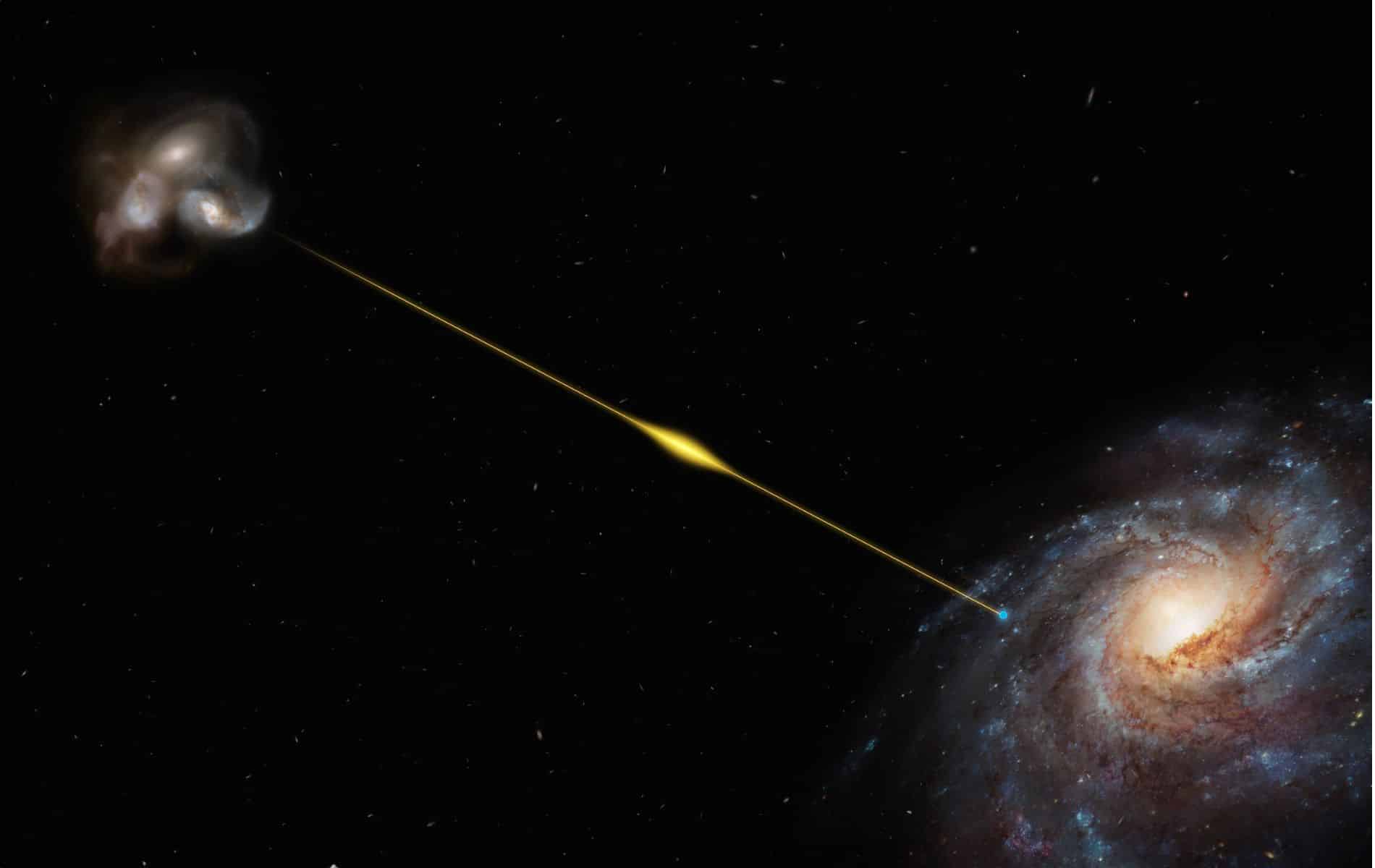Will we finally discover the total mass of the universe?
On June 10, 2022, scientists using CSIRO’s ASKAP radio telescope observed a fast radio burst. This flash occurred as a result of a mysterious cosmic event, which in just a fraction of a second released an amount of energy equivalent to what our Sun will emit in 30 years. in New study Researchers have now looked into this newly discovered radio burst. This leads to some fascinating discoveries.
More about fast radio bursts
Fast radio bursts are some of the most powerful explosions in the universe, and are composed primarily of radio waves. One such flash contains an incredible amount of energy – ten trillion times the annual energy consumption of the entire population of the Earth. What is striking is that these bursts are extremely short-lived, each lasting only a millisecond. In addition, they are unpredictable and difficult to locate, making them mysterious, very short but extremely powerful events in space.
First of all, the radio burst, dubbed FRB 20220610A, appears to be very old. In the recently published paper, the international team reported that they had discovered the oldest and most distant fast radio burst ever, which occurred about eight billion years ago. This remarkable discovery exceeds the previous record of the same team by up to 50 percent.
Origin
The origin of this flash has been identified as a cluster of two or three galaxies about to merge. This supports current scientific explanations about the causes of fast radio bursts. “Using the ASKAP dish network, we were able to pinpoint the source of FRB 20220610A,” said researcher Stuart Ryder. “Next we have Very large telescope from European Southern Observatory They were deployed to Chile to locate the galaxy responsible for the flash. We found that this galaxy is older and more distant than any other source of fast radio bursts observed so far, and appears to be part of a small group of galaxies that are merging.
Macquart relationship
The discovery of the new ancient and distant radio burst confirms that fast radio bursts can be used to measure “missing” matter between galaxies. This theory was originally proposed by the late Australian astronomer Jean-Pierre Macquart. “Macquart showed that the farther away from a fast radio burst in space we are, the more dispersed matter we expose between galaxies,” Ryder explains. “This principle is known as the Macquart relationship. Although some recent fast radio bursts have appeared to deviate from this relationship, our measurements confirm that the Macquart relationship is valid beyond the center of the known universe.
Mass of the universe
This insight is very important. Current techniques used to calculate the total mass of the universe produce conflicting results, challenging the established cosmological model. The exact total mass of the universe is therefore complex and remains an open question in cosmology. “If we count the total amount of ordinary matter in the universe — the atoms that make up everything, including ourselves — we find that more than half of what should theoretically be missing,” says co-author Ryan Shannon. “We think the missing matter is somewhere between galaxies. But it may be too hot and thin to detect using conventional techniques. Fast radio bursts have a unique ability to detect this ionized matter. Even in seemingly empty space, they can ‘see “Where all the electrons are. This ability allows us to measure the amount of matter between galaxies.
Future discoveries
It would of course be helpful if astronomers could detect more radio bursts. To date, researchers have identified about 50 fast radio bursts, and about half of these detections were made using ASKAP. Scientists suggest that in the future we should be able to detect thousands of such flashes across the entire sky, even at greater distances. “While we still don’t know what causes these massive bursts of energy, our research confirms that fast radio bursts occur regularly,” Shannon said. “This opens the door to their use as a tool to track intergalactic matter and gain deeper insight into the structure of the universe.”
New telescope
ASKAP is currently the leading radio telescope for detecting and locating fast radio bursts. But to detect those thousands of radio bursts, we need heavier artillery. We don’t have to wait much longer for that. At the moment Square kilometer matrix Built in Western Australia and South Africa. This radio telescope will consist of thousands of interconnected receivers. This creates a very large radio telescope with a combined reception area of one square kilometre. This new telescope will be more advanced than ASKAP and will allow astronomers to detect and locate older, more distant radio bursts. In addition, the ESO mirror is approximately 40 meters long Very large telescope The ELT, currently being built in the barren Chilean desert, is needed to further search for the source galaxies of these flashes. The ELT will be able to provide images that are 15 times as clear as those provided by the Hubble Space Telescope.
In short, we are facing an exciting period in fast radio burst research. The hope is that we will eventually be able to figure out not only exactly where these mysterious phenomena come from, but also how they arise. Moreover, these radio bursts could give us new insights into the mass of the invisible part of the universe. Fast radio bursts are thus valuable cosmological tools that allow astronomers to collect indirect information about invisible matter between galaxies, which is crucial to our understanding of the universe and its evolution.









